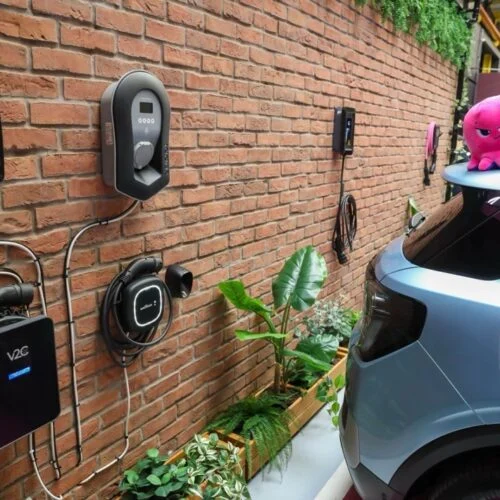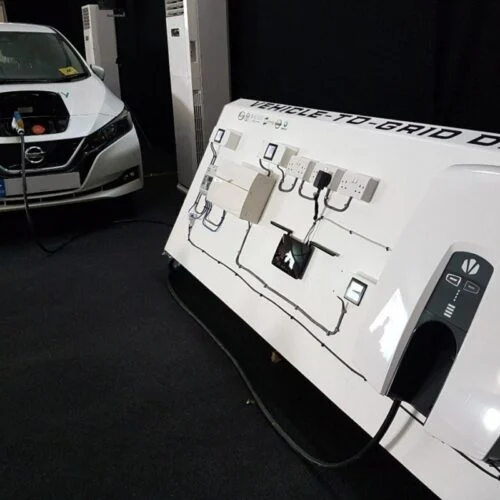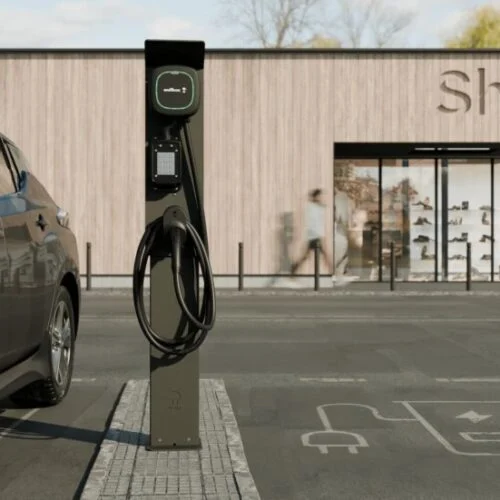In this contributed blog, Neil Palmer, motorsport business development lead at electric motor and inverter manufacturer Helix, introduces the electric drive unit and why it is the next step in boosting EV range and performance.
In recent decades, motor efficiencies and power densities have improved significantly. This has been a major structural factor in EV adoption. Without these breakthroughs, automakers simply would not have been able to economically produce today’s generation of battery electric vehicle (BEV) platforms.
The pressure to improve powertrains and drive systems shows no sign of relenting; if anything, it’s intensifying. Manufacturers are being pushed to find new ways to boost vehicle range and performance, along with reducing the embedded emissions burden of BEVs. To scale BEV production, automakers need to find ways to reduce the cost and complexity of vehicle assembly and delivery.
The automotive industry is increasingly turning to a new innovation to address these challenges. By consolidating and standardising EV drive systems into a single package, electric drive units (EDUs) promise to cut costs for higher-end electric powertrains by an order of magnitude. And along with making top-tier EV performance more accessible than ever, they can also help EV makers reduce many of the assembly burdens and inefficiencies found in everyday vehicle lineups.
What is an EDU?
EDUs bring together the core components of the electric powertrain – the motor, power electronics and transmission – into a single ‘plug and play’ unit ready for installation into a vehicle. Typically, these powertrain components are separate standalone parts, which are purchased from suppliers and integrated by automakers on their assembly lines.
Each of these powertrain components depend on each other and need to work together harmoniously to deliver peak performance. This demands extremely high levels of precision manufacturing by suppliers. But it also makes assembly and integration a significant challenge.
Along with the high cost of the components themselves, the task of integrating and assembling these individual components is often a major driver of cost and efficiency losses. This cost is largely borne by automakers and is a particular challenge for specialist markets like motorsport with very fine quality margins.
In fact, assembling the powertrain system can be one of the biggest sources of cost and complexity in EV manufacturing, especially when compared to their ICE counterparts. According to engineering and manufacturing consulting firm Munro and Associates’ research the components and assembly of the powertrain reflects 51% of EV costs, compared to just 18% of ICE costs.
How does EDU integration boost performance?
By bringing together the powertrain into a single unit, an integrated EDU offers an opportunity for huge savings in costs for EV makers, and ultimately improved performance.
The integration of the EDU allows for optimal packaging of the components by consolidating several systems into a single unit. This results in an overall reduction in the volume of the powertrain, which in turn will allow it to fit into more challenging applications with tighter space efficiency margins.
As well as saving on space and mass, packaging components together into an EDU also creates significant efficiency gains, since the parts can be specially designed to interface with their counterparts.
For example, the inverter and transmission can be tailored to match the specific motor used, whereas they must be compatible with a variety of motors if sold as individual systems. In this way, bringing components together into an EDU allows for components to be optimised in a way that wouldn’t be otherwise possible, and may pave the way for engineering innovations to further improve mass and energy efficiency.
There are several examples of ways in which implementing EDUs results in savings in mass, resources and complexity. Housing for components can share a single enclosure, cutting down on overall mass and resource use. Thermal management solutions can be consolidated to avoid redundancy, as it will no longer be necessary to provide individual cooling loops. Significant portions of wiring can be cut down on or even eliminated outright, which reduces assembly work, saves resources and also allows components to communicate with each other more effectively.
How can EDUs cut costs?
As well as the overall efficiency benefits, EDUs help automakers discover savings around the complexity of assembling powertrain components.
Consolidating these parts into a single unit means that it will be possible to apply the system in more compact vehicles and compartments. But, more importantly, the implementation of integrated EDUs also drives standardisation and economies of scale on assembly lines, further improving processes and optimisation for automakers.
Along with saving on the cost of assembly lines and machinery, EDUs can free up resources and expertise that currently is spent on integration challenges – and instead, focus on delivering new technologies and innovations that will drive adoption and market share.
EDUs are at the frontier of innovation
EDUs offer a range of incremental improvements that quickly add up, leading to major savings on mass, energy usage, range, and vehicle cost. This means it could constitute the next key competitive differentiator for auto brands.
The pressure to constantly improve on efficiency is even more pronounced in high-performance industries like motorsport. Extraordinarily fine margins for mass, energy efficiency and cost can be game-changing in a world where every second counts.
The implementation of EDUs offers a range of benefits for motorsport; the simplicity of a single unit results in significant improvements in ease of installation, repair and replacement. This also means that there will be minimal risk of faults between components, along with lower costs through standardised tooling and servicing. Finally, the use of EDUs improves safety because it reduces the number of high-voltage connections and simplifies operations for less experienced technicians and engineers.
For teams looking to deliver the next generation of BEVs, whether it be for volume production or high-performance application areas, finding ways to optimise their powertrain remains a top priority. Today, this increasingly requires a full-system mindset, and the consolidation of propulsion systems into integrated EDUs.





